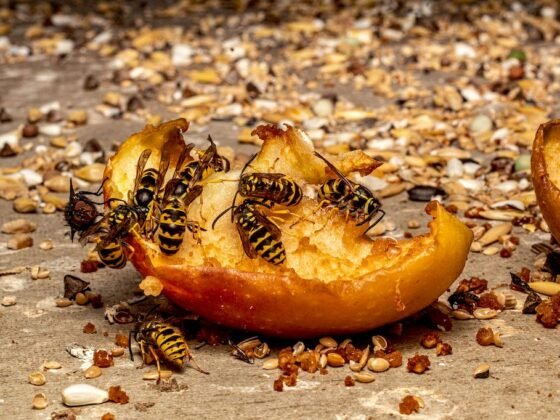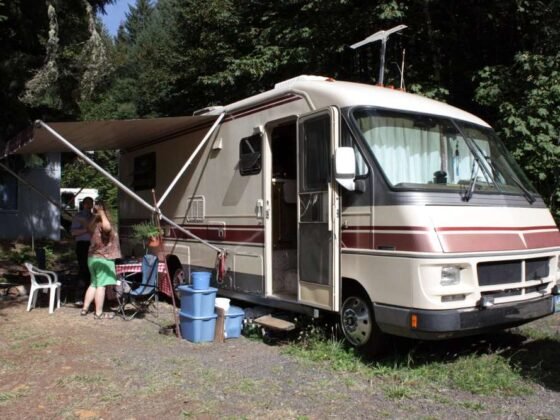Table of Contents Show
Read how to make a small water garden pond/decorative pond fountains with no money and start the project today.
Tips for measuring for the dig location are included, as well as information on how to choose a liner for a lily pond. Creating a water garden pond can be accomplished very inexpensively on a tiny budget.

Pond Plants 101 0n a Budget – Water Garden
Ever wondered how to make a small water garden pond with no money? If you are looking for a way to give your house more curb appeal or just jazz up the yard, lily ponds make a nice addition to already existing landscaping.
Lily ponds do not have to be expensive, and a beautiful water display can be created on a budget.
Consider using recycled materials or stone as a landscaping feature around or at the bottom of the water garden pond to save money as well.
First, determine where the water garden will be located.
Choose an area that receives at least four to six hours of sunlight each day because most aquatic plants do well and flourish in the light; however, do not choose an area that gets direct sunlight all day long.
Choosing a site that gets direct sunlight all day long causes water gardens to overheat and makes it more difficult to maintain a clean and healthy balance in ponds.
Furthermore, do not build a lily pond under overhanging trees, as the falling leaves can contribute to polluting the water.
Try to use areas that have a natural slope to the landscape to create waterfalls and other display features. A level area in an open location is absolutely the best place.
Keep in mind that it may be best to keep the lily pond near the house or patio as evaporation can affect the level of water in the pond. Have the pond close by making it simple to top it off and add water on a regular basis.
Read Also:
- Key Steps on How to Prepare The Land For a Beautiful Water Feature
- 4 Low-Maintenance Fish to Add to Your Outdoor Fountain
- Many Sorts Of Plants Are Suitable For An Aquatic Garden
- Just Keep Swimming – Maintaining a Healthy Fish Pond
- 5 Things to Consider When Setting Up a Garden Pond
- 3 Ways to Decorate a Pond to Make a Big Splash
- Top Features That Make an Ideal Pond
Easy Steps to Creating a Small Water Garden Pond Inexpensively
Choose an area close to an electrical source as lily ponds require a pump to circulate the water.
Two GFCI (ground fault circuit interrupter) regular outlets are ideal and just fine to use, but four GFCI outlets are better.
This allows a connection to two pumps and a UV (ultraviolet) sterilizer while still having one outlet left for other useful equipment such as lighting or additional pumps for spitters.
Step 1. Digging the Chosen Location
Dig the hole at the chosen location or area and create several different stepped out levels. The first level is usually reserved for any stonework around the pond. The second level steps down about a foot, which is yet another level for the pond plants.
Most aquatic plants grow nicely in 12 inches of water. The base-level should be the shallow end of the pond and should gradually slope downward to a deeper end.
The base level is reserved for waste collection, so at that level make a ledge at one end for the skimmer and another ledge at the other end for the housing of the pump unit.
The pump re-circulates water and keeps it moving from the shallow end to the deepest end, picking up any dirt or debris and allowing easy access for cleaning ponds out with a net.
Pond liners are a must in any water garden pond as they have the ability to hold in water. Once the dig site is completed, you need to measure, purchase, and install a flexible pond liner.
Step 2. Measuring and Purchasing Pond Liners
Calculate the correct size of the liner to purchase by measuring the exact length, width, and depth of the pond. Next, double the depth and add that number to the values of the length and width.
Once you have that measurement, add an extra two feet for the pond edges. This gives the correct size for the pond.
Pond liners come in many different shapes and provide a unique natural-looking water garden. Some liners are made of heavy-duty two-ply rubber that is durable and flexible.
These liners make are ideal for custom installations. Many heavy-duty liners offer a guarantee of up to 20 years.
Do not skimp on liners; choose a high-quality rubber one with at least 45 millimeters of rubberized synthetic plastic.
Be careful when choosing pond liners, as some liners contain oils and fungicides that can leach into the water garden and kill plants and fish.
Step 3. Installing the Pond Liner
Before installing the liner, spread a layer of sand at the bottom of the dig hole to prevent any punctures from rocks or tree roots.
Center the flexible liner over the dig hole and push it down into the hole.
Place a few heavy rocks around the edges of the water garden pond to allow you to fill the hole with water. You can fill the lily pond with water from a regular garden hose.
Step 4. Filling and Conforming Pond Liners
At this point, get into the pond and smooth out any wrinkles from the liner with hands and bare feet while the pond is filling with water.
The weight of the water allows the liner to conform to the shape of the pond.
Remove the heavy rocks around the edges and allow the liner to settle against the sides of the pond.
Do not fill the pond to the top as there is a risk of having the lily pond overflow during periods of heavy rain. It is better to play it safe.
Step 5. Covering the Edges with Natural Landscaping Materials
Cover the edge of the pond liner with your choices of landscaping materials, such as soil or natural stones. This will help to hold the liner in place.
Maintenance Care 0f Pond and Plants for Water Garden
Algae growth is the biggest battle to overcome a lily pond. With proper care, the pond obtains balance and constant supervision is unnecessary. Algae require sunlight and excessive nutrients to grow.
Broadleaf water plants shade the water and help protect from too much light. They also make use of nutrients and so prevent their buildup.
Plants may need monthly pruning and dying leaves should be taken out of the pond frequently. Slugs and snails help ponds stay clear, as they feed on pond waste, thereby performing a necessary service.
Pond filters also assist in reducing algae but remember to clean them regularly for the highest efficiency. There are also chemicals to control algae, but care must be used since they may be toxic to plants and fish.
By following the simple steps in this How to Make a Small Garden Pond Without a Great Expense article, a water garden pond can be created easily and for a small budget.
Making your own water garden feature can be very gratifying and provides a peaceful view from the window.
Resource Links
- Reference Video – How to build a water garden fish pond – https://www.youtube.com/watch?v=FfDIAa9nxyA
- DIY Natural Backyard Pond – https://www.motherearthnews.com/diy/garden-and-yard/backyard-pond-zm0z15onzmar









